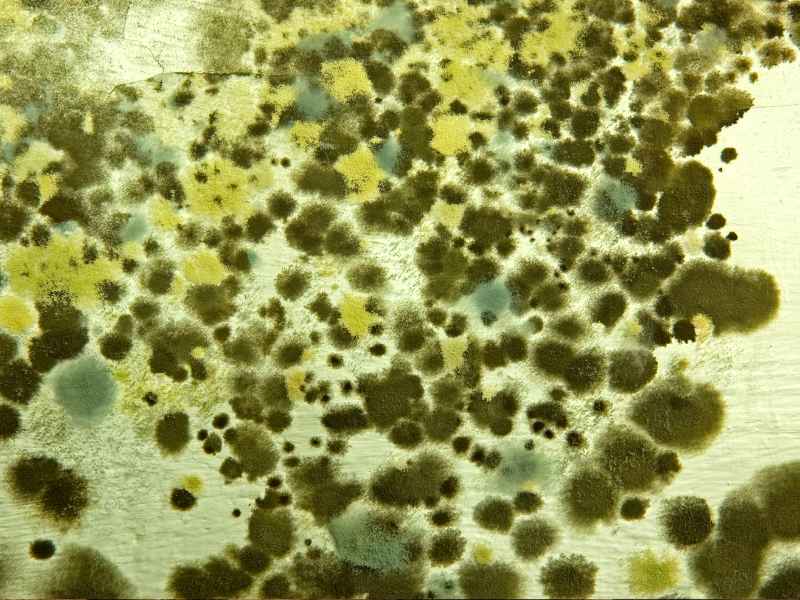What Is Mold and Why Is It Dangerous?
Why Mold is a Problem:
- 1. Health Risks: Mold exposure can lead to respiratory problems, allergies, and toxic reactions, particularly in vulnerable individuals such as children, the elderly, and those with weakened immune systems.
- 2. Structural Damage: Mold weakens walls, ceilings, and floors by breaking down organic materials like wood and drywall.
- 3. Reduced Property Value: A mold-infested home is harder to sell and often requires costly remediation.
Visible and Physical Signs of Mold in Your House
1. Visible Growth
Mold often appears as fuzzy patches, streaks, or spots in colors like black, green, white, or even orange. Common places include:
- Bathrooms (around showers, sinks, and tubs).
- Basements or crawl spaces.
- Around leaky windows or roofs.
- Inside cabinets or closets.
For a detailed guide on spotting mold, check out this resource on household mold signs by HGTV.
2. Stains and Discoloration
Water stains or discoloration on walls and ceilings often indicate hidden mold. To learn how to detect mold inside walls, use a flashlight and inspect areas around plumbing leaks or damp basements.
3. Peeling Paint or Wallpaper
4. Musty Odors
How to Check for Mold in the Air in Your House

DIY Air Testing Kits
Purchase a DIY mold testing kit with a Petri dish mold identification chart to collect samples from different areas in your home. While these kits can indicate the presence of mold, professional testing provides more accuracy.

Professional Mold Testing
10 Warning Signs of Mold Toxicity
- 1. Chronic Allergies: Sneezing, runny nose, and congestion that persist, especially indoors.
- 2. Respiratory Issues: Wheezing, coughing, or shortness of breath.
- 3. Skin Irritation: Rashes or itchiness that worsen over time.
- 4. Eye Irritation: Red, watery, or itchy eyes.
- 5. Sinus Infections: Recurring sinus problems, headaches, or nasal congestion.
- 6. Fatigue: Unexplained exhaustion or weakness.
- 7. Brain Fog: Difficulty concentrating, memory loss, or confusion.
- 8. Asthma Flare-ups: Increased sensitivity in asthmatic individuals.
- 9. Dizziness or Nausea: Feeling lightheaded or unsteady.
- 10. Sore Throat or Persistent Cough: Symptoms that don't improve with medication.
If you or your family members exhibit these symptoms, investigate your home for mold immediately.
1. Inspect Damp Areas
Check for moisture around:
- Leaky pipes or plumbing.
- Roof leaks or poorly sealed windows.
- Appliances like refrigerators or washing machines.
2. Use a Moisture Meter
This device measures humidity levels in walls and floors, helping you locate mold without tearing into structures.
3. Drill and Test
In extreme cases, professionals may drill small holes to collect samples from behind walls for analysis. Learn more about this process from EPA mold testing guidelines.
What to Do If You Think You Have Mold in Your House
1. Document the Evidence
Take mold identification photos of any visible signs to share with a professional.
2. Avoid Disturbing the Mold
Don’t attempt to clean or scrub mold yourself, as this can release spores into the air.
3. Call Professionals
Reach out to trusted companies, like UHS Mold, that specialize in mold inspection and remediation.

How UHS Mold Can Help

- Mold Inspections: Using state-of-the-art tools to identify mold, even in hidden areas.
- Air Quality Testing: Detecting airborne mold spores and ensuring a healthy environment.
- Mold Remediation: Safe and effective removal of mold with eco-friendly methods.
- Prevention Solutions: Providing tips and solutions to keep mold from returning.
Preventing Mold Growth
- 1. Control Humidity: Keep indoor humidity below 60% using dehumidifiers.
- 2. Fix Leaks Promptly: Address plumbing and roof leaks immediately.
- 3. Ventilate: Ensure proper ventilation in bathrooms, kitchens, and laundry rooms.
- 4. Clean Regularly: Use mold-resistant cleaning products in damp areas.
- 5. Monitor Moisture: Check basements, crawl spaces, and attics for signs of dampness.





